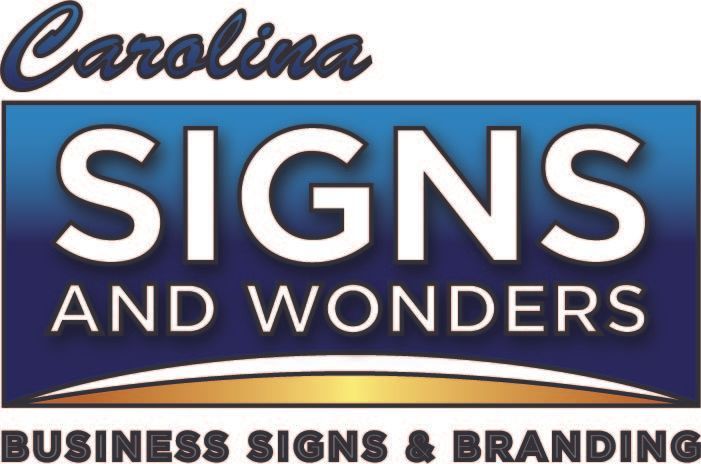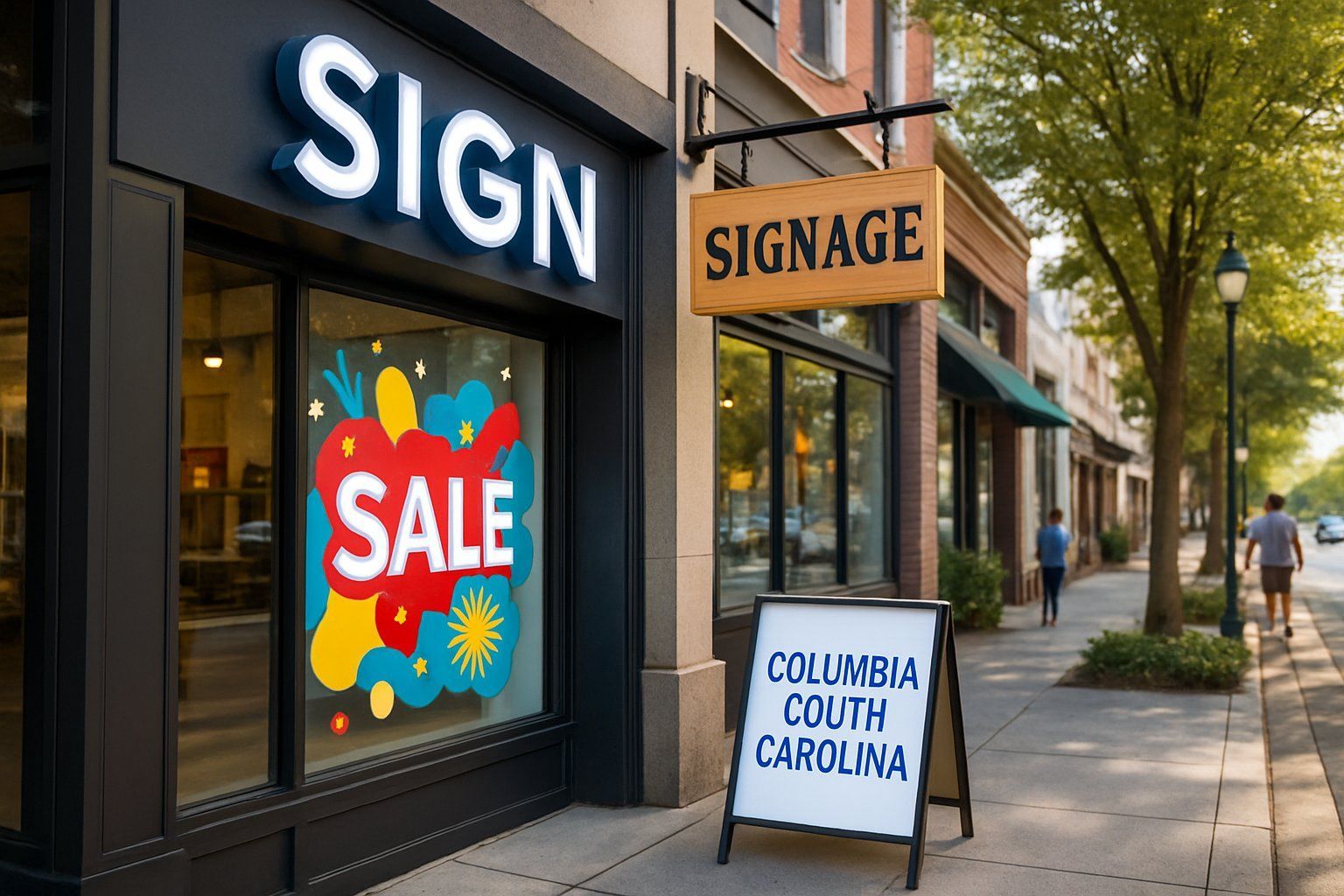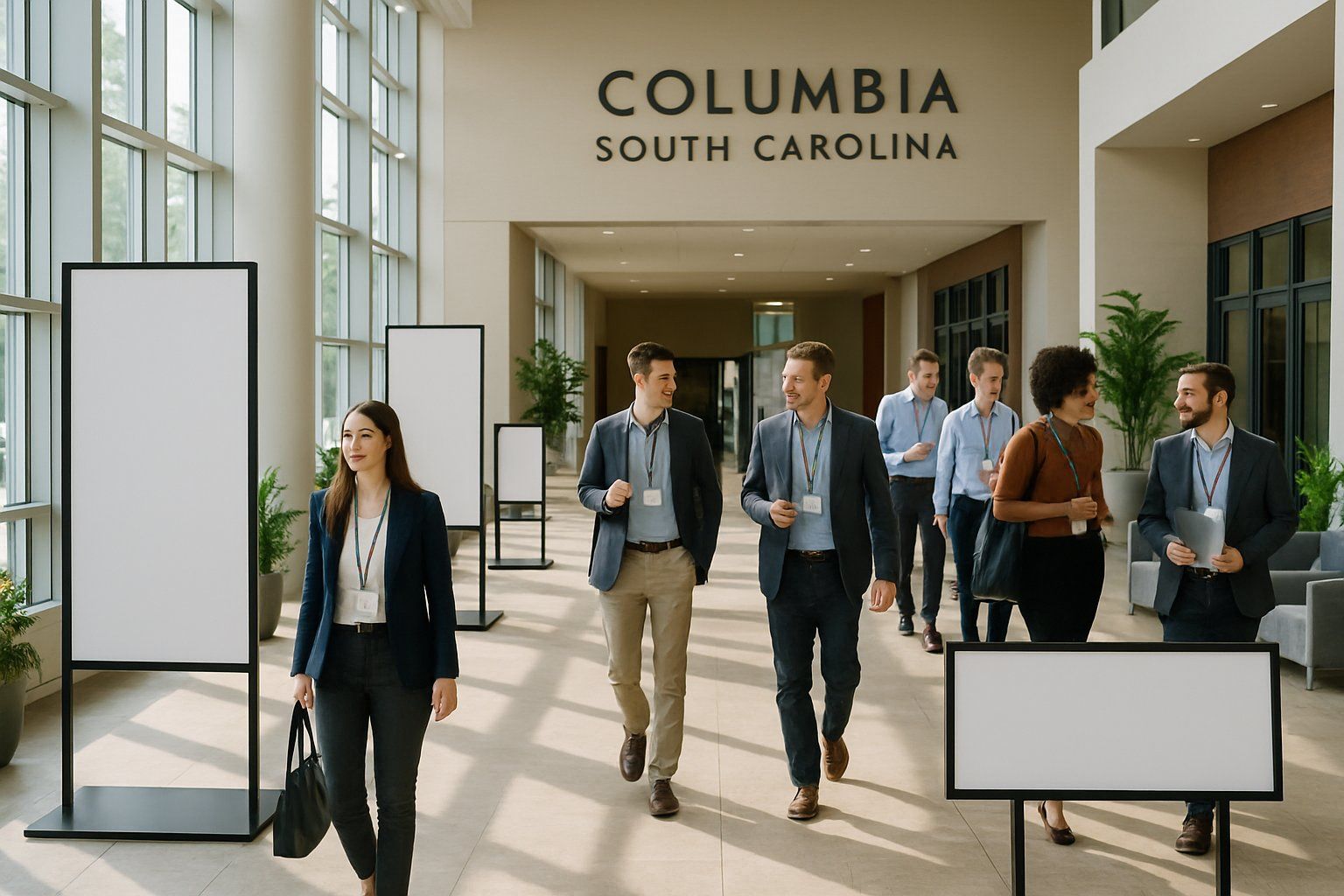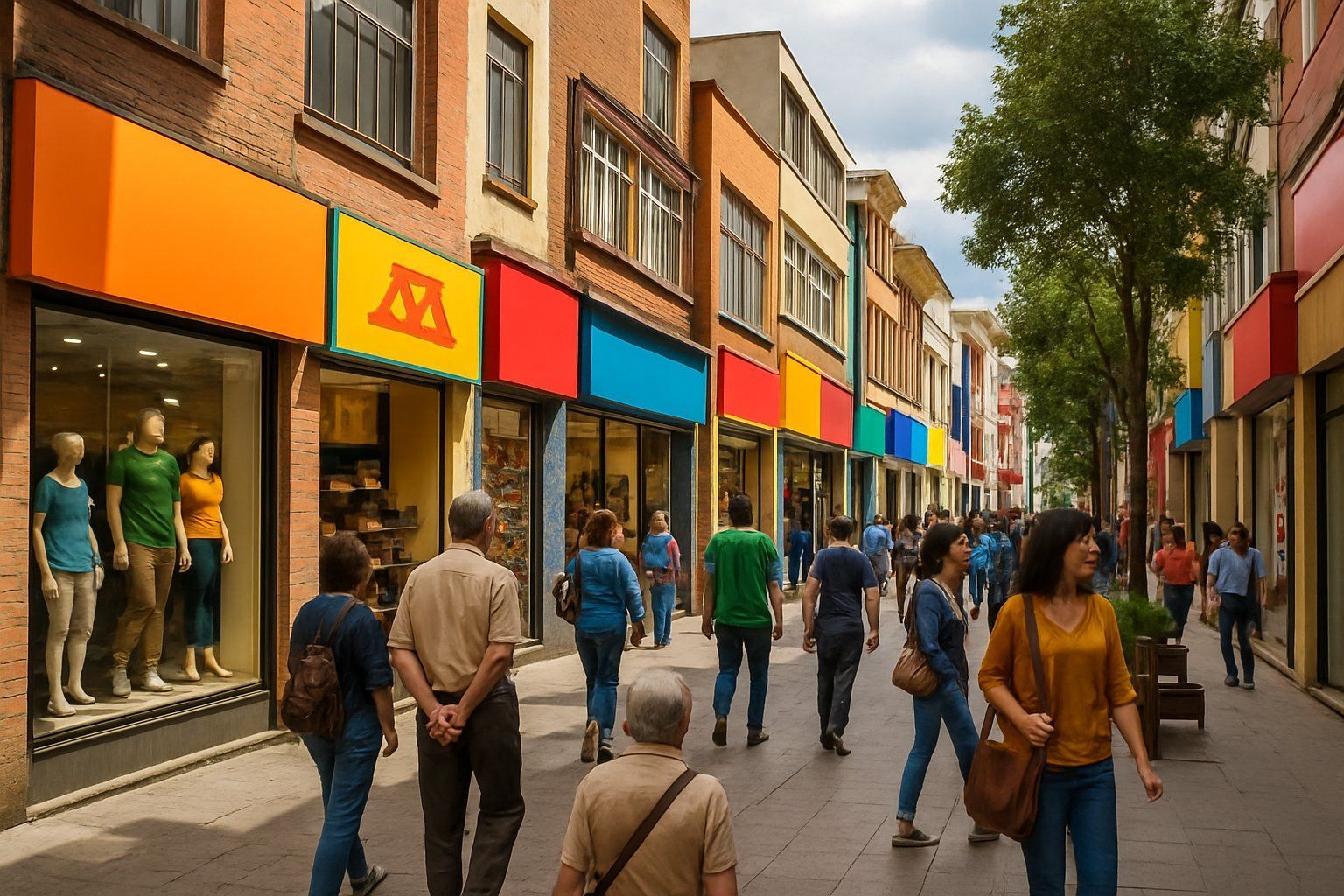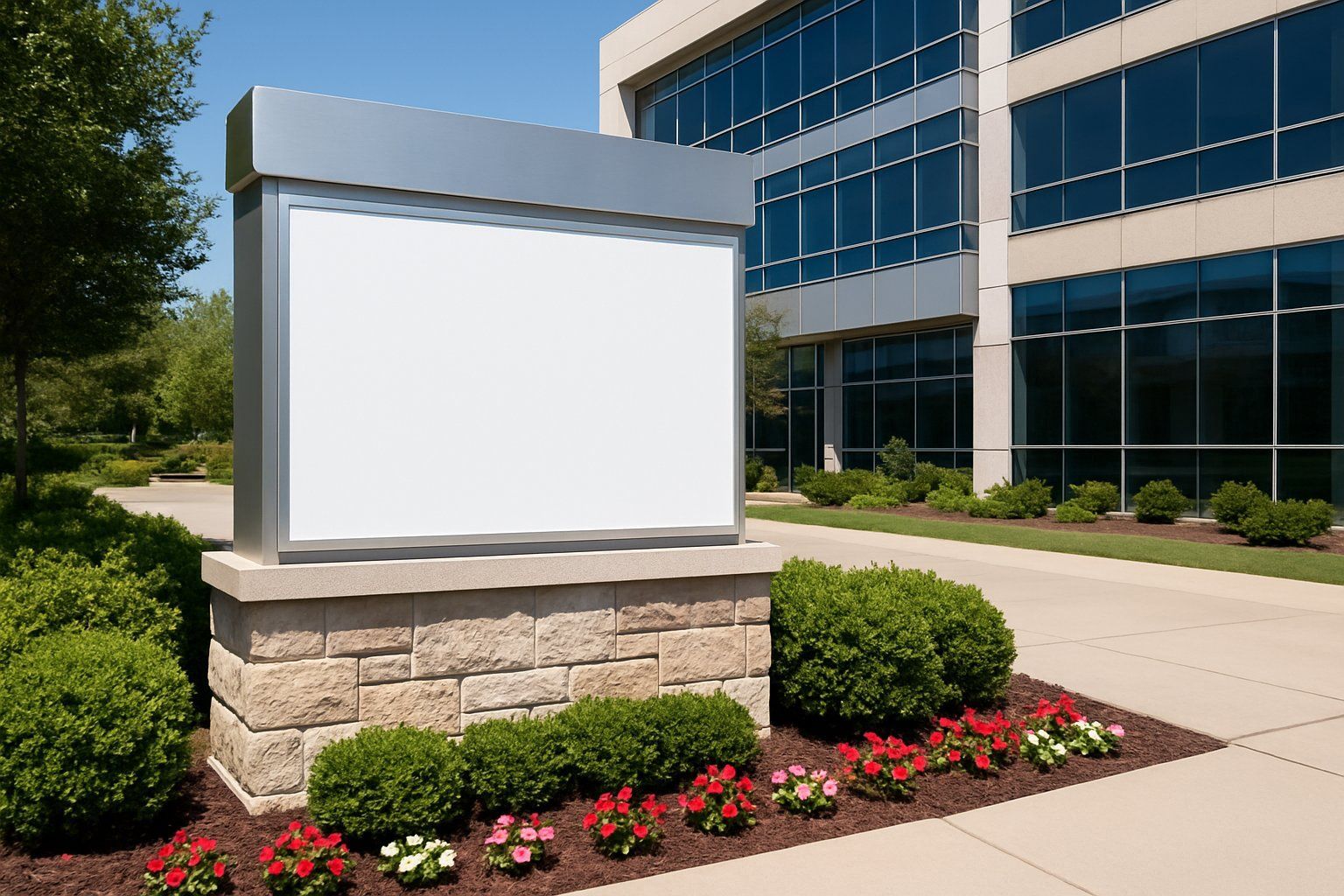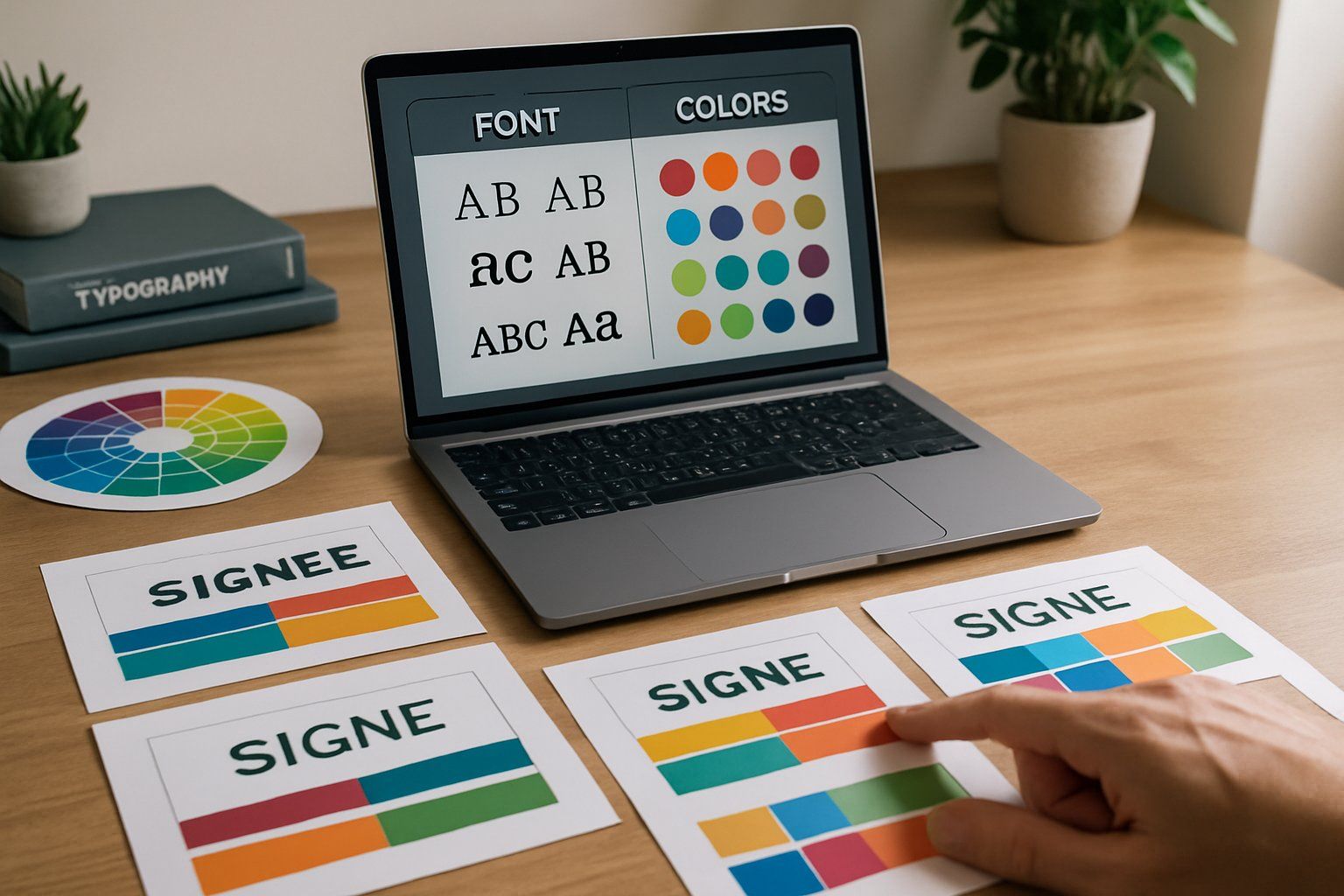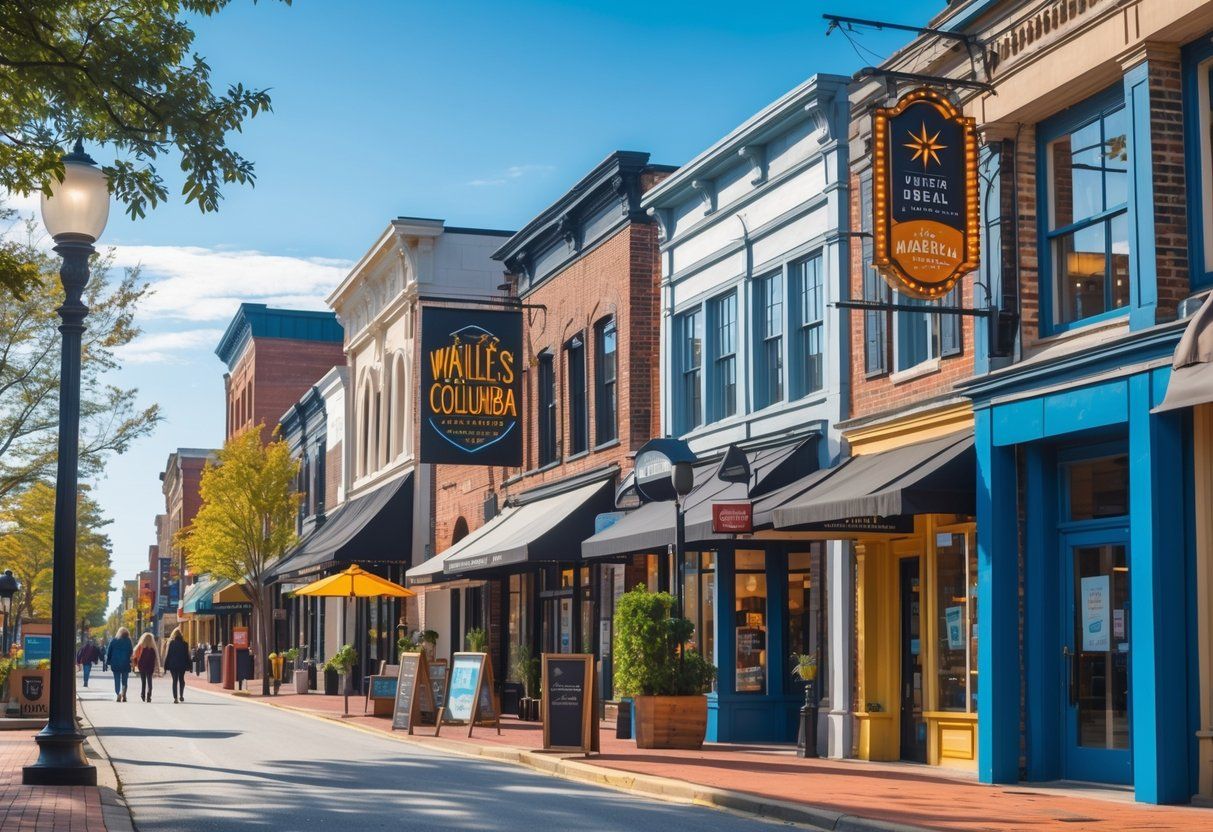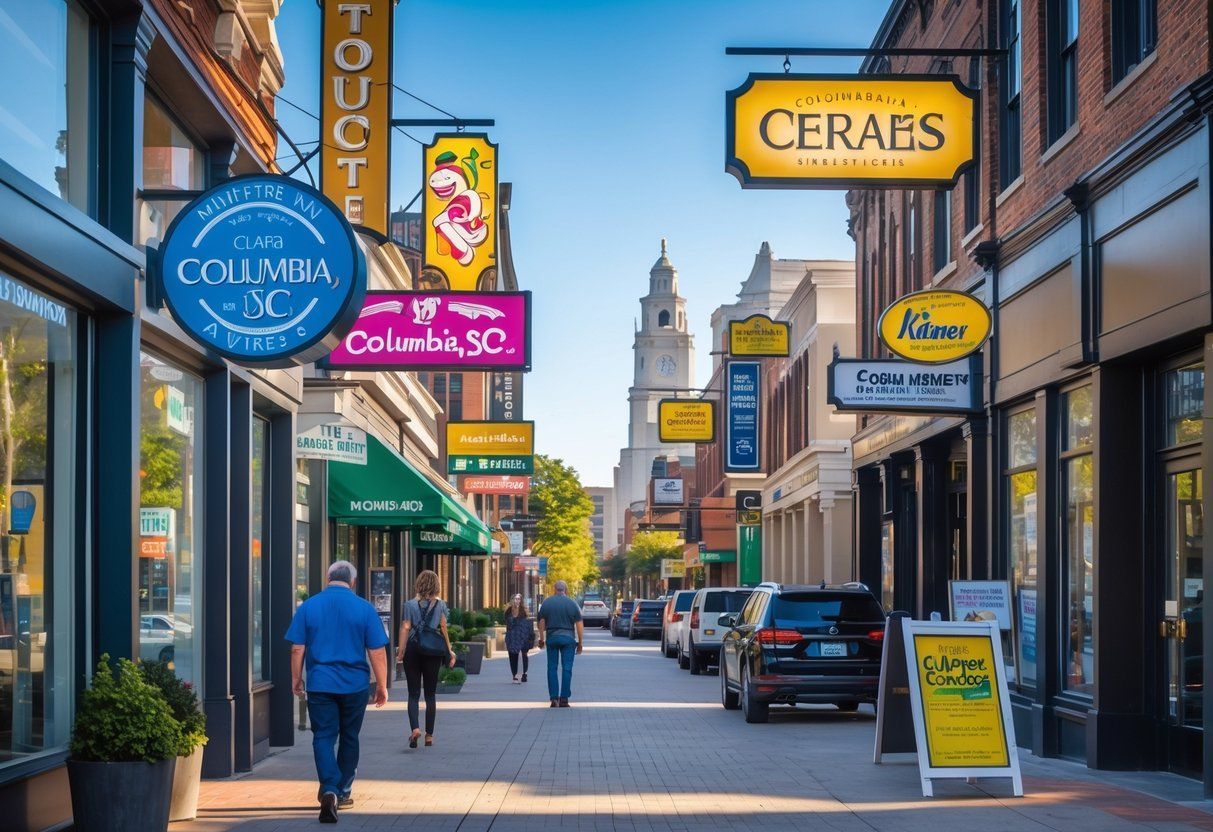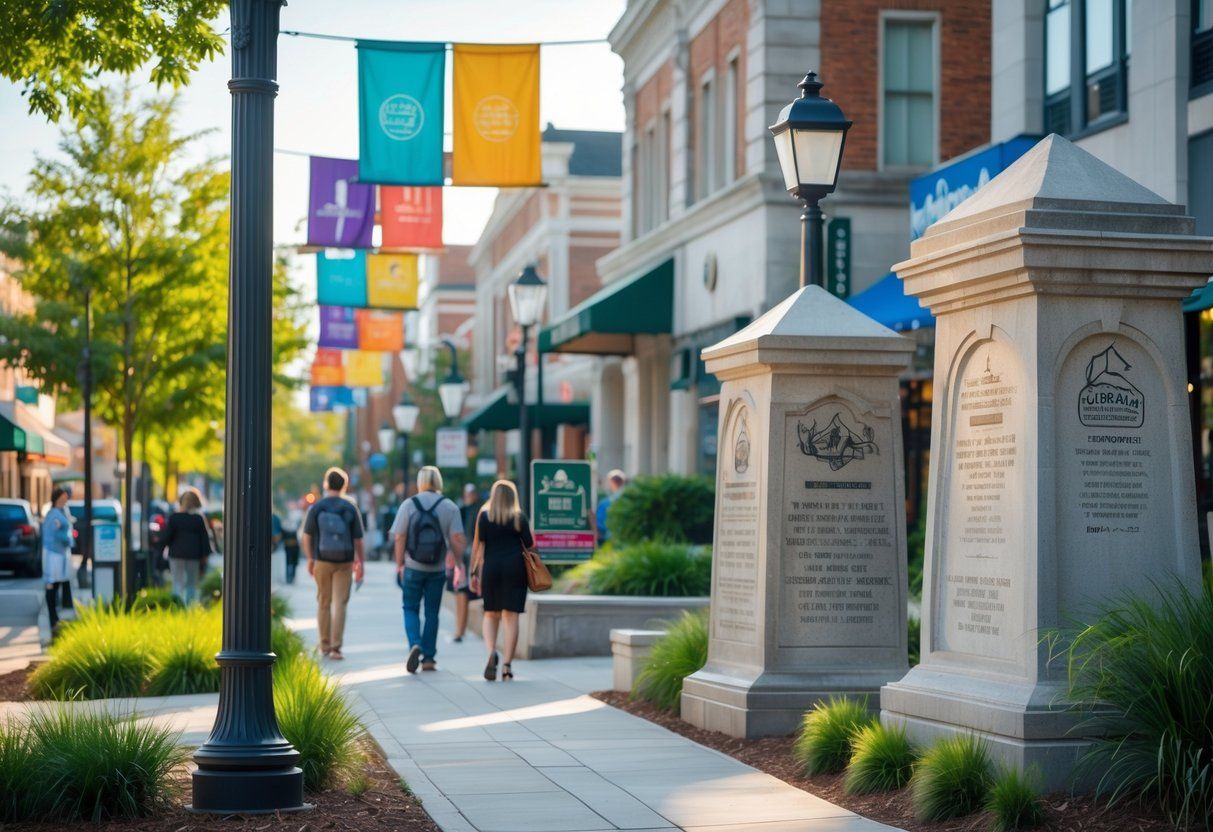The Difference Between Channel Letters, Lightboxes, and Monument Signs Explained for Effective Business Branding
Businesses use different kinds of signs to attract customers, but not all signs are the same. Channel letters are individual 3D letters that light up, lightboxes are box-shaped signs with a lit graphic, and monument signs are large, ground-level structures often found at entrances.
Understanding the differences helps businesses choose the right sign for their needs.

Each sign type has its own look and style. Channel letters stand out on building facades, lightboxes show clear, bright graphics, and monument signs offer a strong physical presence near streets.
Choosing the best sign depends on the location, budget, and message.
Key Takeaways
- Channel letters are individual lit letters attached to buildings.
- Lightboxes display illuminated graphics inside a box frame.
- Monument signs are large, ground-mounted and used for entrances.
Overview of Channel Letters, Lightboxes, and Monument Signs
These three common types of business signage serve different purposes and offer distinct looks for outdoor and exterior signage. Each type has unique features, materials, and visibility suited to various business needs.
Definition and Purpose
Channel letters are individual 3D letters or shapes mounted on a building facade. They are often made of metal or plastic and include internal lighting for night visibility.
Businesses use channel letters to enhance brand recognition with clear, bold lettering visible from a distance.
Lightbox signs consist of a box frame with a translucent face. A graphic or logo is displayed on the front, which lights up from inside.
These signs provide uniform illumination of the entire surface and work well for logos or messages that need clear visibility day and night.
Monument signs are freestanding structures usually placed at ground level near entrances or along roads. They are made of durable materials like stone, concrete, or metal.
Monument signs offer a sturdy, professional look and help identify business locations from a distance.
Key Differences Between Sign Types
Channel letters attach directly to building exteriors, giving a more integrated and dimensional look. Lightboxes have a sealed frame with backlighting, creating a flat, glowing surface that can display detailed graphics.
Monument signs differ by being independent structures, not attached to buildings. They are larger and often include landscaping around them, making them highly visible from the road.
In terms of lighting, channel letters light each letter individually, lightboxes glow across the whole sign face, and monument signs may have internal or external lighting depending on design.
Each type is suited to specific placements: channel letters for building walls, lightboxes for storefronts or poles, and monument signs for entrances or roadside identification.
Channel Letters Explained
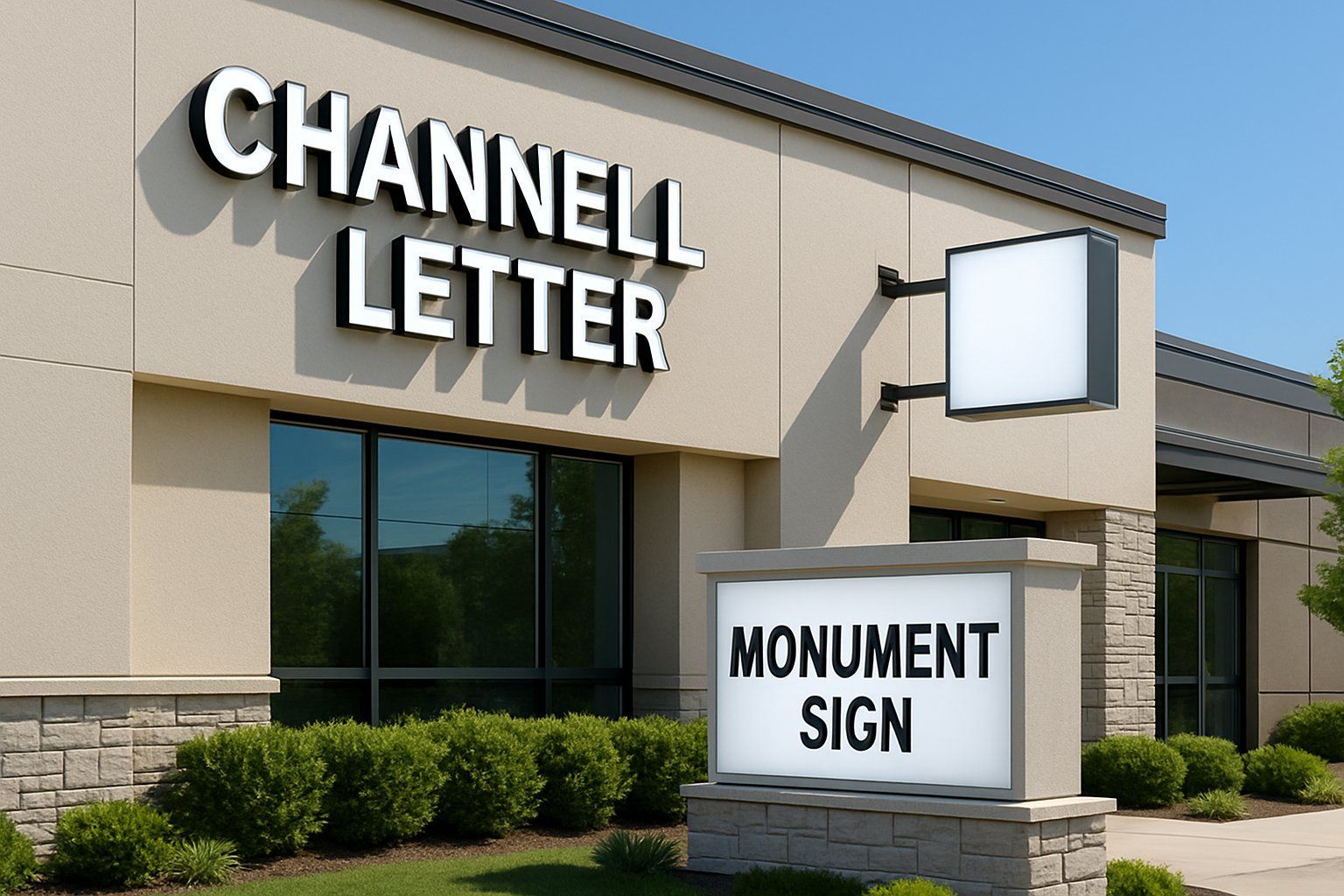
Channel letters are three-dimensional signs often used on building exteriors. They combine various materials and lighting choices to create clear and visible branding.
These signs can be fully closed or open-faced, and their design options allow for unique custom looks.
Construction and Materials
Channel letters are made from sturdy sheet metal, usually aluminum, which is lightweight and rust-resistant. The face of the letter is often covered with acrylic or polycarbonate to protect internal components and provide a smooth display surface.
The back and sides are formed from metal sheets to create a hollow space. This makes each letter three-dimensional and ready to hold lighting.
The hollow structure also allows for wiring and fixtures to be installed inside.
Open-faced channel letters do not have a front cover. Instead, they expose the lighting directly through the metal sides, giving a distinct look.
The choice of materials affects durability and style based on the installation environment.
Lighting Options and Effects
LED lighting is the most common choice for channel letter signs because it is energy-efficient and bright. LED lights are installed inside the hollow space of each letter to illuminate the acrylic or polycarbonate face.
Different lighting effects can be achieved. Back-lit, or halo-lit, channel letters have lights mounted inside that shine toward the wall, creating a glowing outline around each letter.
Open-faced channel letters use LED lights visible through the front.
The color and brightness of the LED lights are customizable. This flexibility helps the sign stand out day and night, enhancing visibility and attracting attention.
Customization and Design Variations
Channel letter signs offer many customization options. Designers can choose font styles, sizes, and colors to match a brand’s identity.
The letter shape can also be altered to fit unique logos or thematic requirements.
Materials can be mixed; for example, an aluminum body with a colored acrylic face or even metal finishes for a specific look. Some signs use different lighting zones for multicolor effects.
This flexibility makes channel letters suitable for many applications, from storefronts to commercial buildings.
Their three-dimensional shape, combined with lighting, creates a professional and eye-catching sign design.
Lightbox Signs in Detail
Lightbox signs are a popular choice for businesses because of their bright visibility and customizable design. They combine durable materials with advanced lighting to create attractive, eye-catching displays.
Structure and Materials
Lightbox signs, also called box signs, feature a hollow frame that holds the lighting and face panel. The frame is often made from aluminum or steel to ensure strength and resist weather.
The face is usually acrylic or polycarbonate, both clear and sturdy materials that allow light to pass evenly. The face panel can be printed or cut with graphics and logos to match a business’s branding.
These materials also make the sign weather-resistant and easy to maintain. Custom signs can be built in various sizes and shapes to fit specific locations or brand needs.
Illumination Technology
Most lightbox signs use LED lighting inside the box to provide bright, energy-efficient illumination. LED lights have a long lifespan and work well in different weather conditions.
They also create even light distribution across the sign’s face, avoiding dark or bright spots.
The LED layout inside can be adjusted for color temperature and brightness, helping signs stand out in various environments.
This lighting technology uses less power than older options like neon or fluorescent bulbs, lowering operating costs for businesses.
Branding Advantages
Lightbox signs offer strong branding benefits by making logos and text visible at any time. The clear acrylic or polycarbonate face allows for vivid colors that catch the eye.
Customization options include changing fonts, colors, and sizes to align closely with brand identity.
Because they light up after dark, lightbox signs extend brand visibility beyond regular business hours. This helps attract more customers and improves recognition in busy or dimly lit areas.
Their professional look adds to a company’s image of reliability and quality.
Monument Signs: Features and Uses
Monument signs use solid bases to display business names and logos at ground level. They combine durable materials and clear designs to enhance visibility and support branding.
These signs are often placed near entrances for easy recognition.
Design and Construction
Monument signs are built with strong materials like stone, brick, concrete, or metal. These materials ensure the sign lasts outside through weather changes.
The lettering can be raised, engraved, or backlit to improve readability.
The base is usually wide and low, giving the sign stability. The design often matches the building’s style or the company’s brand colors.
Some include lighting to remain visible at night.
Placement and Visibility
Monument signs sit near sidewalks, roads, or entrances. Their low height makes them easy to read for drivers and pedestrians alike.
Positioning is key for maximum exposure without blocking views.
Lighting can be added to boost visibility in the dark or bad weather. The sign’s location is often regulated by local rules, ensuring it doesn’t obstruct traffic or other signs.
Common Applications
Many businesses use monument signs for outdoor signage at office parks, schools, and shopping centers. They are effective for long-term branding because they last and look professional.
They often mark entrances or boundaries, showing company names, addresses, or logos.
Monument signs help create a strong first impression and guide visitors clearly to the business.
Comparing Applications and Ideal Settings
Different signs serve distinct purposes depending on the location and type of business. Each option fits better in certain spaces based on visibility, style, and branding needs.
Restaurants, Cafes, and Retail Stores
Channel letters are popular for restaurants, cafes, and retail stores because they stand out well day and night. Their 3D design with lighting makes it easier for customers to find the business from a distance.
This type of sign works best on building fronts in busy shopping areas or streets.
Lightboxes are another good choice for these businesses. They offer bright, even lighting and are often used for menus, hours, or logos.
Lightboxes are great inside or outside where clear visibility is needed but in smaller spaces.
Monument signs are less common here but useful for businesses in shopping centers or malls. They provide a strong, grounded look and help identify clusters of stores or restaurants from the road.
Corporate and Professional Environments
In corporate and professional settings, monument signs are often preferred for their clean, authoritative appearance. They can be placed at building entrances or along roads, offering a stable, professional look that matches office buildings.
Channel letters also appear on corporate buildings but usually in more subtle, refined styles. They promote brand identity without drawing too much attention.
Lightboxes are typically used indoors in these settings, such as in lobbies or hallways, to display logos or wayfinding information clearly and professionally.
These signs enhance the building’s interior without being overwhelming.
Installation, Maintenance, and Durability
Each type of sign has specific needs when it comes to putting it up, keeping it running well, and lasting over time. These details help decide which sign works best for different settings.
Installation Considerations
Channel letters often require precise measurement and secure mounting to ensure each letter is aligned and safely attached to the building. They usually need electrical work for lighting, so professional electricians are involved.
Lightboxes need a sturdy frame and usually require a flat surface for installation. They also involve wiring inside for even illumination.
Proper sealing is important to prevent water damage.
Monument signs are heavier and often need a concrete foundation or base. They may require site preparation and permits, especially if near roads.
Installation can take longer due to their size and structure.
Maintenance Requirements
Channel letters need regular cleaning to keep their bright appearance. Their electrical parts should be checked to avoid burned-out lights or wiring issues.
Keeping the letters free from debris prevents damage.
Lightboxes require cleaning of the face panels to maintain brightness. The internal lighting components, like LED strips or tubes, might need replacement over time.
Seals should be inspected to keep out moisture.
Monument signs usually demand less frequent cleaning but should be checked for rust or cracks in the base. Landscaping around the sign also requires care to ensure visibility.
Lighting maintenance depends on the type used.
Long-Term Durability
Channel letters are durable but can fade or crack under harsh sun exposure. Materials like aluminum and acrylic improve lifespan.
Electrical parts can wear out over years.
Lightboxes withstand weather well if sealed correctly. However, face materials may yellow or become brittle.
LEDs last long but should be replaced eventually to avoid dimming.
Monument signs are very durable and can last decades if made with materials like stone, concrete, or metal. They resist wind and impacts better than lighter signs but may need repairs if cracks develop.
Choosing the Right Sign for Your Business
Selecting a business sign depends on how much control is needed over design and what the business can afford to spend. It also matters how the sign will be used daily, including maintenance and visibility needs.
Customization Options
Customization is key when choosing between channel letters, lightboxes, or monument signs. Channel letters offer flexibility in font, size, and lighting styles, making them ideal for businesses wanting a specific look.
Lightboxes provide an even glow and can include custom graphics or logos. This makes them useful for brands that want to highlight visuals.
Monument signs are highly customizable in shape and materials, such as stone, metal, or wood. They can include landscaping elements and serve as a strong first impression for businesses needing a sturdy, permanent sign.
Consultation with a sign expert helps determine which style offers the best customization for the brand’s image and location.
Budget and Operational Needs
The upfront cost and ongoing expenses differ among these signs. Channel letters tend to cost more initially because of lighting components and installation complexity.
Lightboxes usually fall in the mid-range price category with moderate maintenance. Maintenance is mainly for lighting checks and cleaning.
Monument signs have variable costs depending on materials and build. They usually require less frequent repairs.
Operational needs include lighting requirements. Channel letters and lightboxes need electrical power, which increases monthly costs.
Monument signs often rely less on lighting, lowering energy use.
Frequently Asked Questions
Channel letters stand out with their 3D design and customizable lighting. Lightboxes offer even illumination and weather resistance.
Monument signs provide a strong, ground-level presence with sturdy materials.
What are the main characteristics that distinguish channel letters from other sign options?
Channel letters are individual three-dimensional letters attached to a building. They often light up with LED or neon inside.
They are customizable in shape, size, and color. The depth of the letters makes them easy to see from a distance.
What are the advantages of using lightboxes for outdoor signage?
Lightboxes produce uniform light across the sign’s surface. They protect graphics from weather damage due to a sealed frame.
They are suitable for brands needing bright, eye-catching signs. Lightboxes work well for changing messages or graphics.
In what scenarios is it preferable to use monument signs over other types of signage?
Monument signs are best for ground-level, permanent identification. They sit on a base, making them highly visible for pedestrians and drivers.
They fit well at entrances to business parks, schools, or residential communities. Their size and solidity show a professional image.
How does the illumination work in channel letters and lightboxes?
Channel letters use LEDs or neon inside hollow letter shapes to light up. The light is direct and often highlights edges or fronts.
Lightboxes use LED strips or panels behind a translucent face. The light spreads evenly to illuminate the entire sign.
Can you outline the typical maintenance requirements for each type of sign?
Channel letters need regular checks for lighting and cleaning to remove dirt or insects. Wiring and mounting bolts should be inspected.
Lightboxes require cleaning of the outer face to keep visibility high. Electrical components need routine testing.
Monument signs need periodic cleaning and inspection for structural damage. Landscaping around them may require upkeep.
What materials are commonly used in the construction of monument signs, and how do they affect durability?
Monument signs often use concrete, stone, brick, or metal. These materials resist weather and damage well.
Stone and brick tend to be more durable and require less upkeep.…
